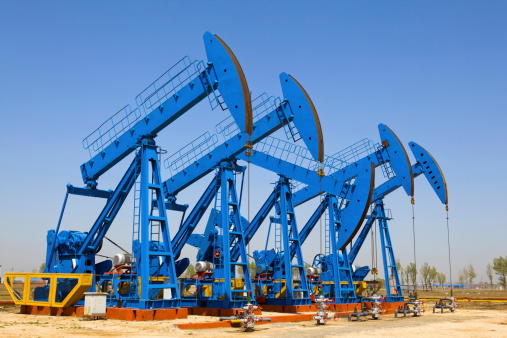
Lloyd Byrne and Brian Downey have correctly, in our view, analyzed the past 12 months:
Energy M&A has seen a slow start in the current downcycle, as potential buyers were reluctant to pay more than the forward curve while sellers didn’t want to divest prematurely.
But, they note, these attitudes are changing:
With commodity prices remaining depressed, and outlooks becoming more pessimistic, the past few weeks have seen multiple transactions where prices paid appear fair to both parties … [and in which] valuations largely made sense in light of the prevailing forward curve.
ALSO READ: Stifel Says Not to Wait for Oil to Bottom: 4 Stocks to Buy Right Now
They point to two specific recent transactions: Encana’s sale of its Haynesville shale assets to Geosouthern Energy for $850 million and Total’s sale of a 10% working interest in its Fort Hills oil sands project to Suncor for $310 million. The analysts expect to see more of this kind of action:
We expect to see an increasing number of similar deals, as buyers look to opportunistically add to core competency positions (as this is the point where returns are made in cyclical industries) and private equity looks to deploy capital in the downcycle. Similarly, sellers use non-core proceeds to fill 2016E funding gaps and/or reinvest in higher-return core assets, as the compounding of “option value moves to option cost” is significant. To-date, the Majors have remained largely underexposed to shale.
Next year is not shaping up to be a better one for oil and gas producers, and Nomura’s analysts see several exploration and production companies that are well-positioned because they now hold core positions in the best shale plays in the United States and, in general, are supported by equity markets. The companies named are Nomura Buy-rated Anadarko Petroleum Corp. (NYSE: APC), Concho Resources Inc. (NYSE: CXO), EOG Resources Inc. (NYSE: EOG) and Neutral-rated Devon Energy Corp. (NYSE: DVN) and Cimarex Energy Co. (NYSE: XEC).
The Nomura analysts noted that Buy-rated Encana, Newfield Exploration Co. (NYSE: NFX) and Pioneer Natural Resources Inc. (NYSE: PXD) are one-off sellers and have no particular need to add incremental acreage.
ALSO READ: Williams, Energy Transfer Merger Leaves Shareholders Unimpressed
We reviewed these companies earlier this month based on Nomura’s data, but one wrinkle that the analysts add this time around is a look at what the major integrated oil companies might or should be doing:
[W]e see shale-directed dollars as among the most flexible, highest return capital (i.e., cores) within the oil patch. To-date shale has largely been financed by independent E&Ps (both public and private), with less capacity to maintain a cash flow outspend in a commodity downturn. Coupled with the high decline nature of shale production, this has led shale investment and production growth to surge and wane with commodity prices. …
One of the Global Integrateds’ main challenges has been right-sizing capex budgets in today’s lower commodity price environment, in order for capital and dividend outlays to more closely align with internally generated cash flows. While some Integrateds are shifting to shale on the margin, a generalized difficulty in their capital budgeting is the long lead time, inflexible cost structures inherent in many of the non-North American onshore projects – deepwater, oil sands, LNG, international, etc. …
Shale and tight oil & gas production accounts for less than 10% of the Majors’ current production with less than 3% being liquids.
Without actually coming out and saying that major integrated companies like Exxon Mobil Corp. (NYSE: XOM) and Chevron Corp. (NYSE: CVX) should invest in the major U.S. shale plays, Nomura’s analysts noted that recent transaction multiples on a dollar-per-barrel basis in the shale regions “have generally been less expensive than the integrateds’ [finding & development] costs.” Nomura also notes that the major integrated companies are relatively underleveraged and could fund a deal with debt.
ALSO READ: Wells Fargo Has 5 Defensive Energy Stocks, Even With Lower Oil Prices
2016 could also see more “merger of equals” transactions, where commodity and efficiency upsides are sweetened with a little cash to cover a transaction premium. But if Exxon or Chevron were to swoop in with fistfuls of cash as a counter-offer, well, it’s not hard to predict what shareholders would want. It hasn’t happened yet, but it could.
Get Ready To Retire (Sponsored)
Start by taking a quick retirement quiz from SmartAsset that will match you with up to 3 financial advisors that serve your area and beyond in 5 minutes, or less.
Each advisor has been vetted by SmartAsset and is held to a fiduciary standard to act in your best interests.
Here’s how it works:
1. Answer SmartAsset advisor match quiz
2. Review your pre-screened matches at your leisure. Check out the advisors’ profiles.
3. Speak with advisors at no cost to you. Have an introductory call on the phone or introduction in person and choose whom to work with in the future
Get started right here.
Thank you for reading! Have some feedback for us?
Contact the 24/7 Wall St. editorial team.



